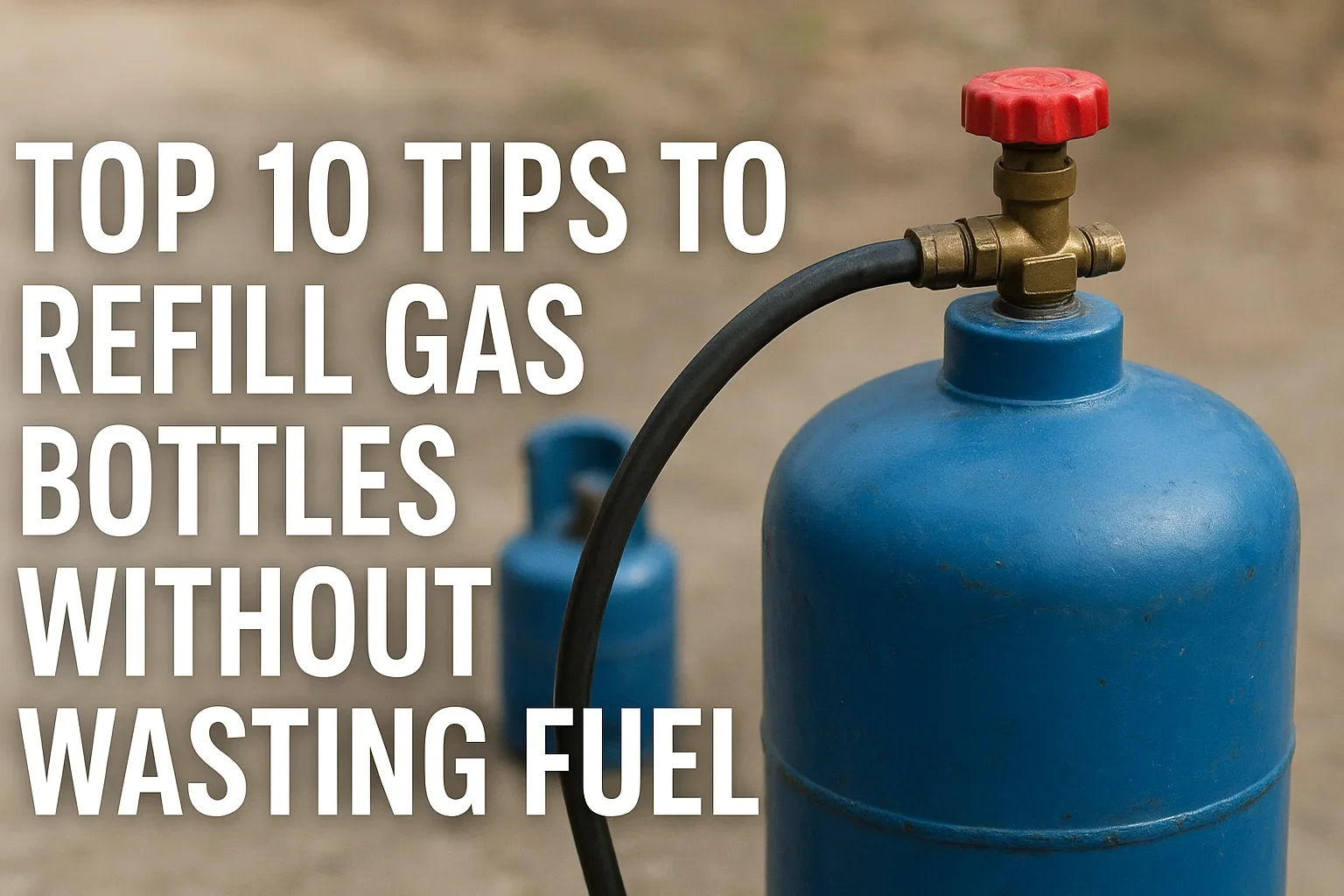Top 10 Tips to Refill Gas Bottles Without Wasting Fuel
Gas bottles are essential for cooking, heating, and outdoor activities. However, many people make costly mistakes when refill gas bottles, leading to wasted fuel and safety hazards. If you want to get the most out of your gas bottles, following the right practices is crucial.
1. Choose a Reliable Refill Station
The first step to minimizing fuel waste is selecting a reputable refill station. Trusted stations follow strict safety standards, ensuring your gas bottle is filled correctly without overfilling or spillage. Avoid unverified or roadside vendors, as improper handling may result in fuel loss or even accidents.
2. Check the Bottle for Damage
Before you refill gas bottles, inspect them for rust, dents, or leaks. A damaged bottle can be dangerous and lead to wasted fuel if gas escapes during refilling. If you notice any issues, replace the bottle before proceeding. Regular inspection ensures safety and prevents unnecessary fuel loss.
3. Refill Only When Needed
Refilling gas bottles too frequently can result in waste, as partially used bottles may lead to unnecessary handling and spillage. Monitor your gas levels and refill bottles only when needed. Keeping track of usage helps optimize fuel consumption and reduces costs over time.
4. Avoid Overfilling
Overfilling is one of the most common reasons for wasting fuel. When refilling gas bottles, always follow the recommended fill levels indicated on the bottle. Overfilled bottles can leak, especially in warm temperatures, causing both safety risks and wasted fuel.
5. Use Proper Equipment
Ensure the refilling station uses calibrated meters and proper connectors. Poor equipment can cause leaks or inaccurate filling. If you are refilling gas bottles at home (where permitted), always use approved regulators and hoses to avoid spillage and ensure efficient fuel transfer.
6. Handle Bottles Carefully
Fuel waste can occur during transportation if bottles are dropped or tipped over. Always handle gas bottles with care, keeping them upright and secure during transit. Using bottle carriers or securing them in a vehicle prevents accidents and preserves fuel integrity.
7. Store Bottles Correctly
After refilling, store gas bottles in a cool, ventilated area, away from direct sunlight and heat sources. Proper storage prevents gas expansion and leakage, which can result in wasted fuel. Avoid storing bottles in enclosed spaces or near flammable materials.
8. Keep an Eye on Temperature
Gas expands and contracts with temperature changes. Refilling gas bottles in extremely hot conditions may cause pressure build-up and spillage. Refill during moderate temperatures whenever possible, or let bottles cool down before topping them up to prevent fuel loss.
9. Train Yourself in Safe Refilling Practices
Knowing how to refill gas bottles safely can make a huge difference. Take time to learn proper techniques, whether from station staff or instructional guides. Understanding the process reduces mistakes, prevents fuel wastage, and enhances safety for everyone involved.
10. Recycle or Exchange Old Bottles
Finally, avoid wasting leftover fuel by recycling or exchanging empty bottles. Many suppliers offer refill exchanges or buy-back programs, allowing you to return bottles and receive a full one without spilling any gas. This practice is both environmentally friendly and economical.
FAQ
Q1: Can I refill gas bottles at home?
Refilling gas bottles at home is possible but highly regulated in many countries. Use only approved equipment and follow strict safety guidelines. Otherwise, visit a licensed refill station to avoid accidents and wasted fuel.
Q2: How often should I refill my gas bottle?
Refill only when the bottle is near empty. Avoid topping up partially used bottles too often, as frequent handling increases the risk of fuel spillage.
Q3: What is the safest way to transport refilled gas bottles?
Always transport bottles upright, secured in a well-ventilated vehicle. Never leave them in a hot car trunk for extended periods, as heat may increase pressure and cause leaks.
Q4: Can overfilling gas bottles cause explosions?
Overfilling increases pressure inside the bottle. Combined with heat, this can be dangerous. Always follow the manufacturer’s recommended fill level and refill at reputable stations to avoid risk.
Q5: How do I know if my gas bottle is leaking?
Signs of a leak include hissing sounds, strong gas odor, or frost formation on the bottle. If detected, stop refilling immediately, move the bottle to a safe area, and consult a professional.
Conclusion
Refilling gas bottles efficiently and safely is vital for reducing fuel waste, saving money, and preventing accidents. By following these top 10 tips to refill gas bottles without wasting fuel, you can ensure that your gas usage is optimized, your bottles remain safe, and your energy costs stay under control. Remember, proper handling, storage, and choosing reliable refill stations make all the difference.

